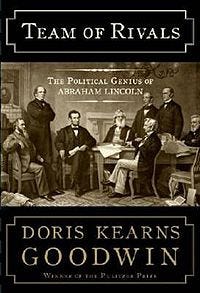Reflections After Teaching About "Becoming a Connected Educator"
Tonight was my first session teaching a group of educators about becoming more connected. I created a Google Site as an online syllabus, Google docs were used to facilitate real time discussion, and I prepared a Keynote to define the connected educator. (A lot of this information is from The Connected Educator by Sheryl Nussbaum-Beach and Lani Ritter Hall, a terrific resource.)
As expected with my first go-round, it had its ups and downs. Here are my takeaways.
What Needs Improvement
Less is More
There are so many great tools out there to connect with others. I only introduced three options for our topic tonight, social bookmarking (Pinterest, Springpad, Diigo). As I taught, I realized that it was too much too soon. I could tell people were getting overwhelmed, so I took a step back and reminded everyone that they may only want to try out one for now. Tonight, people were getting started on Pinterest, but then felt obligated to try out Springpad once I transitioned to that tool. In the future, I am sticking to introducing only one tool per session. Next week is Evernote, and that is plenty.
Go Slow to Go Fast
When I showed the class the different pages on our Google Site, I was later informed that I went too quickly. At our next session, I will review each part of the site for everyone.
Maintain Expectations, Reduce the Workload
This course is not about developing a specific number of pieces of evidence, but to explore what is out there and find the tools that work best for each person. Right now, I am expecting participants to upload five Web 2.0 artifacts, write a one paragraph reflection for each ISTE standard, participate in a Google Doc discussion for each of the eight sessions, and listen to my tutorials for these tools. Too much. I am going to take away the artifacts and reflection page, but keep the Google discussion doc for each session. The artifacts can be posted on a tool of the educator's choice, to be showcased both during and at the end of the course. I also need to remember that the teachers have a lot of other things going on in their lives. I don't want them to view becoming a connected educator as more work.
What Went Well
Visual Presentation
I followed Steve Job's advice about keeping presentations simple and visual. If I had to write down every word of what I wanted to share with the participants, I probably didn't understand the concepts very well. Keynote is a nice app for this purpose. I reflected the slideshow on my iPad to the screen, so I could face my audience and be mobile. Every slide had an image. Many of them had no words at all. For example, I showed a cover of the Lincoln biography Team of Rivals to illustrate the point that we want to connect with multiple perspectives if we truly want to be a learner.

Teach Concepts, Not Devices
A few of the participants asked beforehand if they needed their iPad. I replied that this course was "device-neutral": Most of the tools we would explore could be used on multiple platforms. iPads have only been around for a couple of years. What device will be ubiquitous in the next couple of years? If we are tethered to a certain device, I explained, it is harder to be flexible when change happens (and it will). The concepts of becoming a connected educator, as Nussbaum-Beach and Hall explain, are what will help us stay connected and innovate in our classrooms. Devices come and go.
Being a Learner
As we wrapped up, I apologized to the group that Diigo did not work as well as I had intended. I also reiterated that this is my first time teaching this course, so we were going to have learn together in order for everyone to be successful. If anything could be taken from this experience, maybe it was observing someone who they perceived to be technologically-savvy (me) struggle with the technology. Hopefully I provided a good example that this process is continuous and it is okay to explore and make mistakes.


